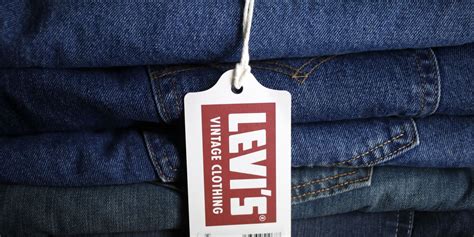Levi Strauss, the iconic denim maker, found itself in choppy waters as it grappled with the uncertainty of tariffs in 2025. Despite maintaining its annual forecast for sales and profit, the company raised concerns about the potential impact of trade policies on its bottom line.
Unpredictable Tariff Landscape
During a post-earnings call, Levi Strauss’ CFO, Harmit Singh, expressed the company’s cautious stance regarding the Trump administration’s tariffs. The evolving nature of trade relations left Levi Strauss facing an unclear future. Singh highlighted the unprecedented challenges posed by fluctuating tariff regulations and their potential effects on the company’s financial outlook.
Expert analyst Rachel Wolff from eMarketer noted that Levi Strauss’ decision to uphold its forecast underscored the volatile environment created by tariff uncertainties. The inability to predict how trade dynamics would unfold has put many brands, including Levi Strauss, in a precarious position.
Strategic Measures Amid Turbulent Times
Despite the looming tariff threats, Levi Strauss remained proactive in its approach to mitigate risks. By focusing on cost-cutting initiatives and promoting full-price apparel sales, the company aimed to bolster its margins amidst economic uncertainties.
CEO Michelle Gass revealed that Levi was exploring strategic price adjustments as one of the countermeasures against potential financial impacts. By carefully calibrating price increases and targeting specific product lines, Levi Strauss sought to navigate through turbulent market conditions while keeping consumer demands in mind.
Resilience Amid Market Volatility
In a landscape where economic fluctuations and policy changes could disrupt businesses overnight, Levi’s ability to adapt and sustain demand for popular products like wide-legged and skinny jeans demonstrated its resilience. Despite consumers exercising caution in discretionary spending, certain fashion trends continued to drive sales for Levi Strauss.
The decision to explore a sale of Dockers as part of operational streamlining reflected Levi’s commitment to staying agile in response to market challenges. By assessing underperforming segments like Dockers and making strategic divestment decisions, Levi aimed to streamline operations for long-term sustainability.
Forecasting Amid Unprecedented Events
Looking ahead into fiscal 2026, Levi projected a slight decline in net revenue within a specified range. While acknowledging external factors such as tariffs and global economic shifts, management at Levi remained focused on optimizing performance despite prevailing uncertainties.
The correction made regarding the impact of tariffs on Levi’s results underscored the complexity of navigating through unforeseen events within today’s dynamic business environment. The delicate balance between forecasting accuracy and adapting swiftly to changing circumstances defined companies’ abilities to thrive amidst unpredictability.
As investors scrutinized Levi’s position amidst tariff discussions, questions arose about whether current valuations accurately reflected market realities. Recognizing these speculations required a deeper dive into industry dynamics and macroeconomic trends shaping companies like Levi Strauss.
In conclusion…
Navigating through uncharted territories defined by tariff uncertainties demanded agility from companies like Levi Strauss. As they braced for potential impacts while maintaining operational efficiency and consumer relevance amid market volatilities will be critical for their sustained success.



Leave feedback about this